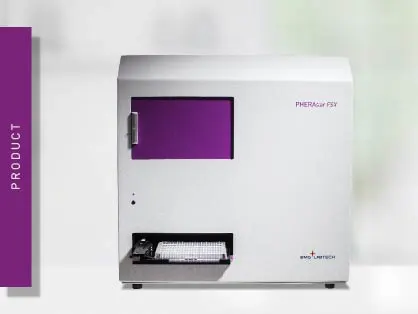
PHERAstar FSX
Powerful and most sensitive HTS plate reader
The G protein-coupled receptor (GPCR) family is comprised of hundreds of receptors that respond to a variety of stimuli to modulate cellular activity. Their ubiquitous expression and cell membrane localization make them attractive. In fact, GPCR represents the most highly targeted protein family by FDA-approved drugs.
Biased agonism, the concept whereby ligands select for and stabilise receptor states that preferentially interact with certain effectors, could be used to enhance therapeutic effects but diminish side effects. This approach, mostly limited to drugs that bias receptor signaling between G proteins versus beta-arrestins has had mixed success so far. A potential reason is that GPCRs are capable of coupling to multiple G proteins and that it is the differences in G protein signaling that account for desired and unwanted effects.
Monitoring discrete GPCR-G protein coupling would provide important biological information about signaling capabilities and facilitate the discovery of drugs biased towards desired G protein effectors.
TRUPATH is a BRET-based platform that enables the monitoring of 14 Renilla lucerifase-fused Gα proteins with the GFP2-fused Gγ subunits of their cognate Gβγ heterodrimers. In the absence of receptor activation, Gα-RLuc and GFP2-Gγ are in close association as part of an intact Gαβγ heterotrimer and produce a BRET signal. Upon receptor activation, dissociation of the heterotrimer results in a decrease in the BRET signal.
Here, an overview of the TRUPATH platform is presented that includes the design and optimization of its biosensor components, a general protocol for its use, and examples of its potential to discover drugs with inter-G protein bias.
Powerful and most sensitive HTS plate reader
Most flexible Plate Reader for Assay Development
Flexible microplate reader with simplified workflows
Upgradeable single and multi-mode microplate reader series